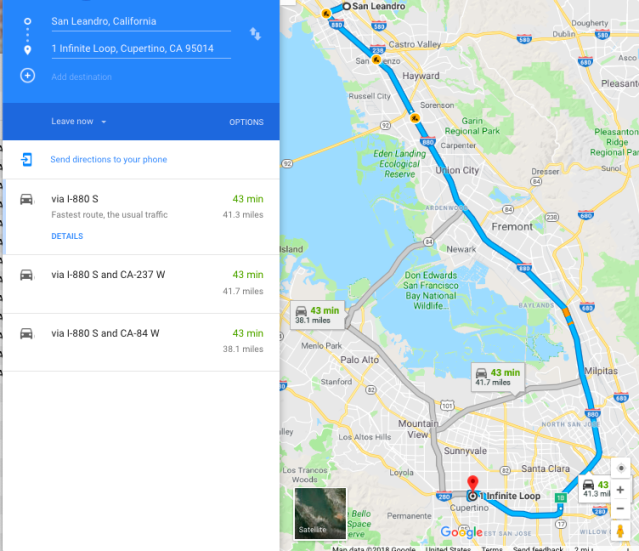My first child was born in 2005. At the time, my career at Apple was starting to take off. But we lived at least an hour from Apple in San Leandro. The commute was really painful now that we had a baby in daycare and both of us had full-time jobs. If something happened to my spouse, and I had to pick up the baby, I basically had to leave at 2:30 when I normally would leave at 5:30 or 6:00. I was basically gone from 9:00 AM to 8:00 PM. It was really hard on my spouse and the baby.

And the work was ramping up as my responsibilities grew.
And then we got pregnant again.
Funny thing about having children: you look at the world differently. We loved our house in San Leandro, and our little neighborhood subdivision was really nice and pretty. However, it was really close to really bad neighborhoods in San Leandro, Oakland, San Lorenzo, and Hayward. Now that we had children, we saw many more shady characters walking and driving around. The high school up the road was truly scary-looking. We decided that we needed alternatives to San Leandro.
There was the night we were up with the baby, and a couple of men were parked in an old car with the engine running right outside our house, talking for two or three hours.
And there was the time the intersection where we lived had tire-mark donuts in it, from somebody doing “sideshow” driving.
We started looking at houses closer to Apple, which would improve my commute, and put us in much better school districts. My wife’s work required a lot of travel, and our house was close to the Oakland Airport. San Jose International had a different, less convenient set of flights, so that would be a drawback, but not that bad, considering the other benefits.
We started taking a look at real estate in Cupertino, Sunnyvale, Santa Clara, Mountain View, Los Altos, and Palo Alto. And we were horrified. Our house in San Leandro was a 4000 square feet, 4 bedroom, 3.5 bath Spanish-style house, with a big kitchen and good living spaces. There was no yard or anything, but the house was spectacular.
There were no houses like that on the Peninsula or in South Bay.
We spent many weekends looking at houses. We found 50 year old houses that hadn’t been updated for $800,000. We found some smallish new construction houses for $1.2 million. But the most dismaying was in Palo Alto.
It was a lot on University Avenue (a busy street). The lot had 4 tiny little houses on it, and one of them was for sale. It was 650 square feet, and had a bedroom, and bathroom, and a kitchen. The house hadn’t been updated (ever), and the roof had grass growing out of it. All of this could have been ours for a bargain price of $999,995! What a deal!
We did find a nice 3000 square-foot house in Cupertino was 3 bedrooms and 2.5 baths, and a reasonable yard. Relatively new. Still not as nice as the San Leandro house, but we liked it. It was $2.6 million.
A side note: I know that prices are much worse now 12 years later. It was still unbelievable then
We talked to our mortgage broker, and she said that she could get us into that house, but unless we made extra payments to the principal, we would not gain any equity unless interest rates went down, and if the housing market started losing value, or if interest rates went up, we would have a negative equity situation, and a ballooning monthly payment.
I grew up in Texas. I met my wife in Texas, even though she did not grow up there. Her ex-husband’s family was from Texas, and she had spent a lot of time there. My family was in Texas. Hers was in Kentucky, but Texas is a lot closer to Kentucky than California is.
I opened a web browser and started looking at positions. There were a lot of positions open in Dallas and Austin. Neither one of us were interested in Dallas, but Austin seemed intriguing.
After we discussed all of the options, we decided that I would pursue positions in Austin. I will discuss the job hunt and the position I eventually interviewed for and took in the next post, but one little post-script.
After I had an offer from the Austin firm, I was trying to plan my exit from Apple. One day, one of the engineers who had worked on the Intel transition approached me, and said, “I was impressed with your work during the Intel transition while in the Developer Tools Program Office.”
“Thanks.”
“There is a position in the Mac OS X Program Office I think you would be a great fit for. You should apply. It’s kind of like what you are doing now, but will be more strategic for Apple, have more visibility, and more impact.”
Sigh.
I told him, “Well, I am moving my family to Texas and leaving Apple. So I won’t be applying.”
He looked very disappointed. I wonder now if that was a position working with iPhone.


